Affiliate links on Android Authority may earn us a commission. Learn more.
Google's Nexus 5: Revisited
November 10, 2014
With Google‘s recent announcement of the Nexus 6, many Nexus fans are left wondering what their other options are. Google did things a little differently this year with their flagship, bringing a much higher price point and larger screen size to the new device. These two factors, unsurprisingly, aren’t everyone’s cup of tea. So what do you do if you want an inexpensive phone that can still receive timely updates? Google’s Nexus 5 still may be a viable option.
We’re here to help you decide if you should upgrade to the Nexus 5, or look somewhere else for your next phone.
The Nexus 5 was announced around this time last year, and made its way to users’ hands within a few weeks after its Halloween launch date. As per usual with Nexus devices, the 5 didn’t set out to change the way we use mobile phones. That said, it did help make the way we look at flagships a bit differently, as it toted some of the best specs on the market for a fraction of the price of it’s competitors. It was originally released in a white, hardshell plastic, or a black, soft touch plastic casing. Since then a red model has also been made available.
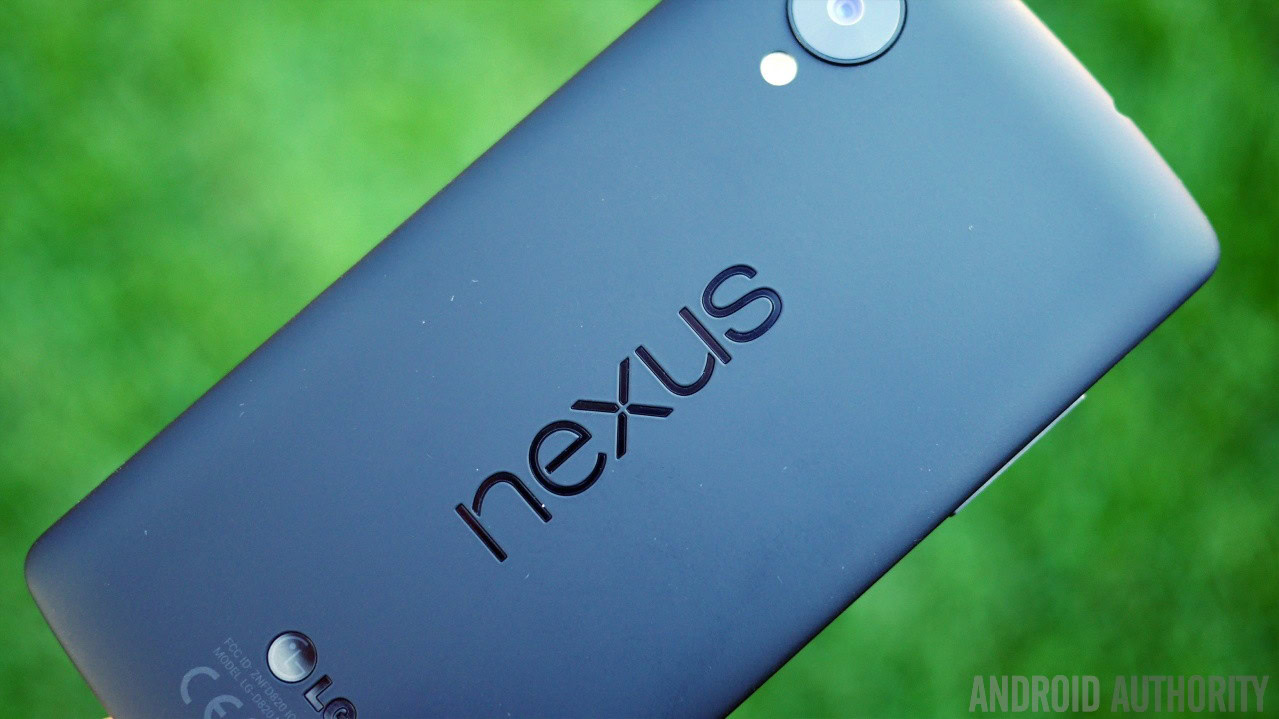
Coming in with a 5-inch, 1080p resolution screen with a pixel density of 445ppi, the 5 wasn’t huge, and brought a great looking screen to the market. At only 8.6mm thick and weighing only 130 grams, the phone sits perfectly in your hand, and offers a great one-handed experience. Inside the phone, the Nexus 5 offers a Snapdragon 800 processor, 2GB of RAM, Qi wireless charging capabilities, and NFC. At the time of launch, Google really stepped up to the plate when it came to specifications… this phone had basically everything you could ask for at the time.
As for today, the phone still flies through the UI, switching applications, and basically anything else you need it to do.
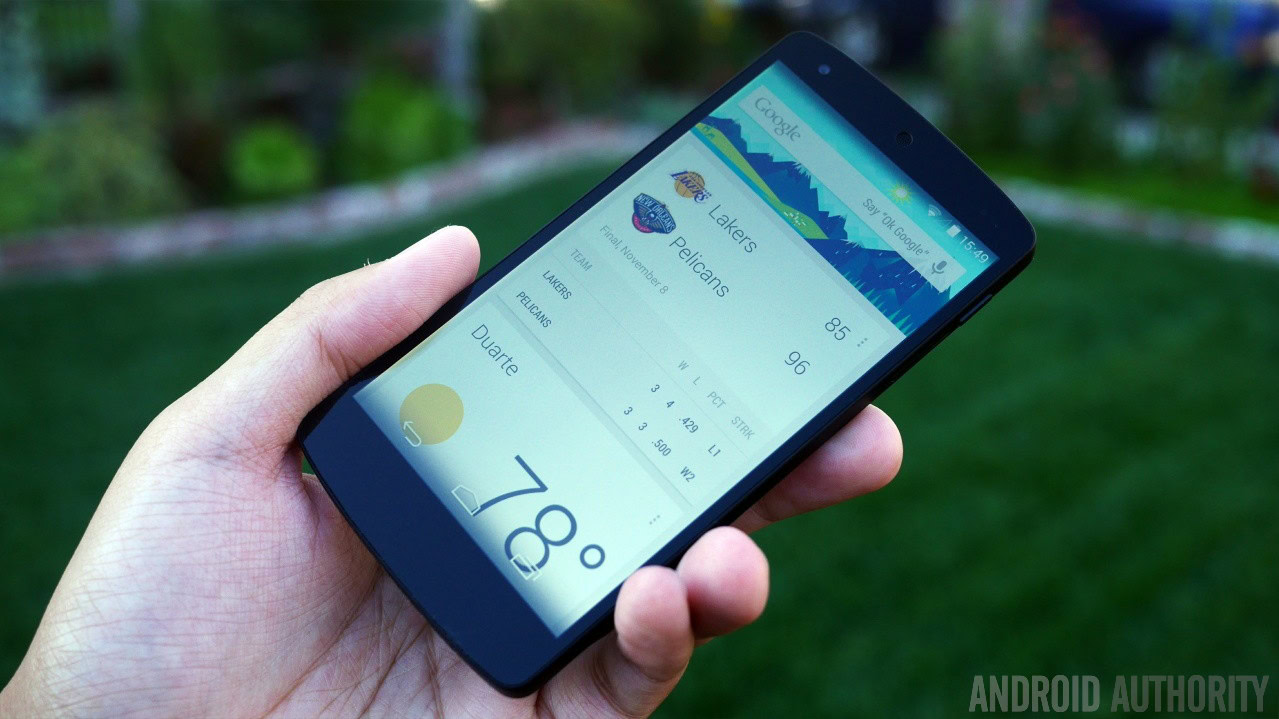
There was one main area that, most would agree, Google could have worked on: the battery. Coming in at 2,300mAh, many users have realized that this just isn’t enough juice. Although the Snapdragon 800 processor is known for its battery saving properties, the phone still suffered from less-than-perfect battery performance. On average, we’ve gotten around 9-11 hours out of the battery on moderate use, and for many, that just won’t do the trick.
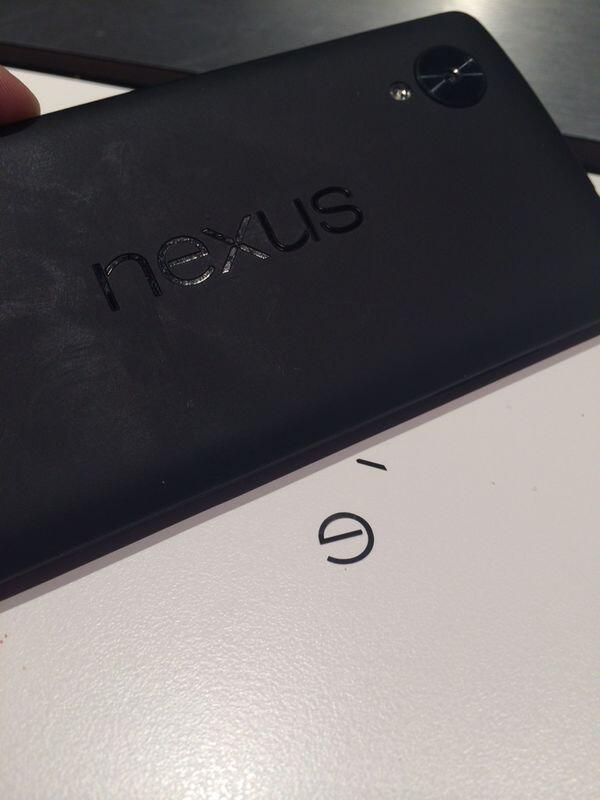
The Nexus 5’s camera hasn’t been something to brag about, either. The 8MP rear-facing camera brought OIS to the Nexus line for the first time, so users were naturally excited to see how it stacked up to the competition. Unfortunately, images were left washed-out and grainy in low light circumstances. Even after numerous software updates and a new Google Camera app, the camera left a lot to be desired. With Google’s HDR+ mode, decent pictures can be taken, but only after a few seconds of image processing takes place. When HDR+ is turned off, pictures are taken within a snap, but they’re left even more washed out than before. There isn’t much to say about the front-facing 1.3MP shooter, either… just very grainy.
As for the overall build of the phone overtime, it’s been so-so. The Corning Gorilla Glass 3 screen is reluctant to take on scratches, and the plastic build is somewhat more durable than other phones when it comes to drops. On early builds of the phone, many users were complaining about the buttons rattling and shaking when moving the phone around. Google has since released an updated version of the phone, fixing some of button complaints that users had. As for the Nexus lettering around back, some users have reported that the glossy plastic letters have fallen off. Although it doesn’t alter the overall feel of the phone, this isn’t a good sign when trying to make a case for the phone’s “premium” build quality. One of our units have also experienced letters falling off, and and we’ve found that using a case is a simple way to ensure that it doesn’t happen again.
We’ve seen how the Nexus 5 holds up with a year of heavy use, but how does it stack up to the others released since then?
A few months after the phone’s release, Samsung announced “the next big thing”, the Galaxy S5. Coming in at around the same screen size, the phone brought a similar in-hand experience, but also offered dust and water resistance. The S5’s camera ran circles around the Nexus 5’s, with it’s 16MP rear-facing shooter. Sure, Samsung’s software wasn’t anything to brag about, but it made up for a bloated software experience with it’s internals. It brought the newer Snapdragon 801, bigger 2,800mAh battery, and the same 2GB of RAM. S5 users could easily get 12 hours of use with the combination of the bigger battery and the 801 processor. As the S5’s performance has been slightly bogged-down thanks to the bloated software, the Nexus 5 really shines when it comes to navigating around the phone.
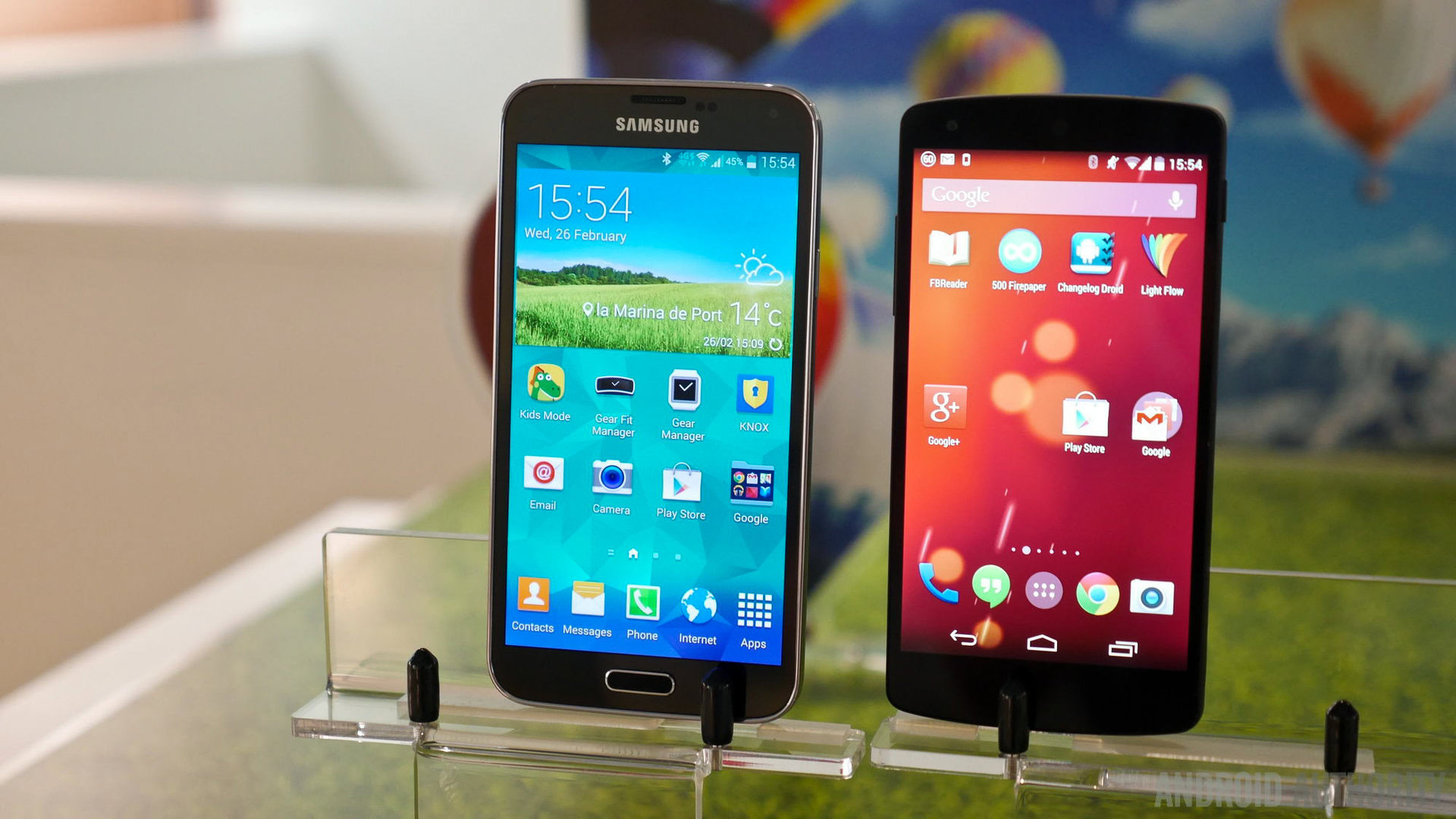
The HTC One M8 was announced soon after that, giving users even more options on where to spend their money. It brought a familiar 5-inch display, aluminum chassis, and super loud front-facing BoomSound speakers. Though the screen size is roughly the same, the overall footprint of the M8 is much bigger, largely because of the front-facing speakers. The M8 brought the Snapdragon 801 processor to the table, as well as a slightly bigger 2,600mAh battery. The in-hand feel of the M8 was much more premium, though it was more slippery and easier to drop. The phone took a lot of heat for its 4-Ultrapixel camera, leaving the Nexus 5’s camera nothing to scoff at anymore. The performance for these two devices are very similar, offering fast movement throughout the UI, fluid gaming, and pretty much anything else you could hope for.
And of course, one of the most recent ‘competitors’ for the Nexus 5 is its successor, the Nexus 6. The newly-announced 6 offers a spec bump in pretty much every category. With its 5.9-inch, QHD 1440×2560 display and a pixel density of 493ppi, the Nexus 6’s display is a worthy upgrade to the 5’s. The 6 also has a Snapdragon 805 processor with 3GB of RAM, and brings the familiar Qi wireless charging, and NFC. Google really knocked it out of the park this time around, at least when it comes to internals. The 6 also has a 13MP rear-facing shooter, and a 2MP front one. As we’re still testing many of these features out, on paper, it seems to be a pretty massive upgrade from the Nexus 5.
That’s just a few of the big flagship devices that have come out since the Nexus 5, but we’d be remiss if we didn’t also mention the extremely affordable OnePlus One. And then there’s devices like the Note 4, LG G3, Moto X (2nd gen) and the list goes on.
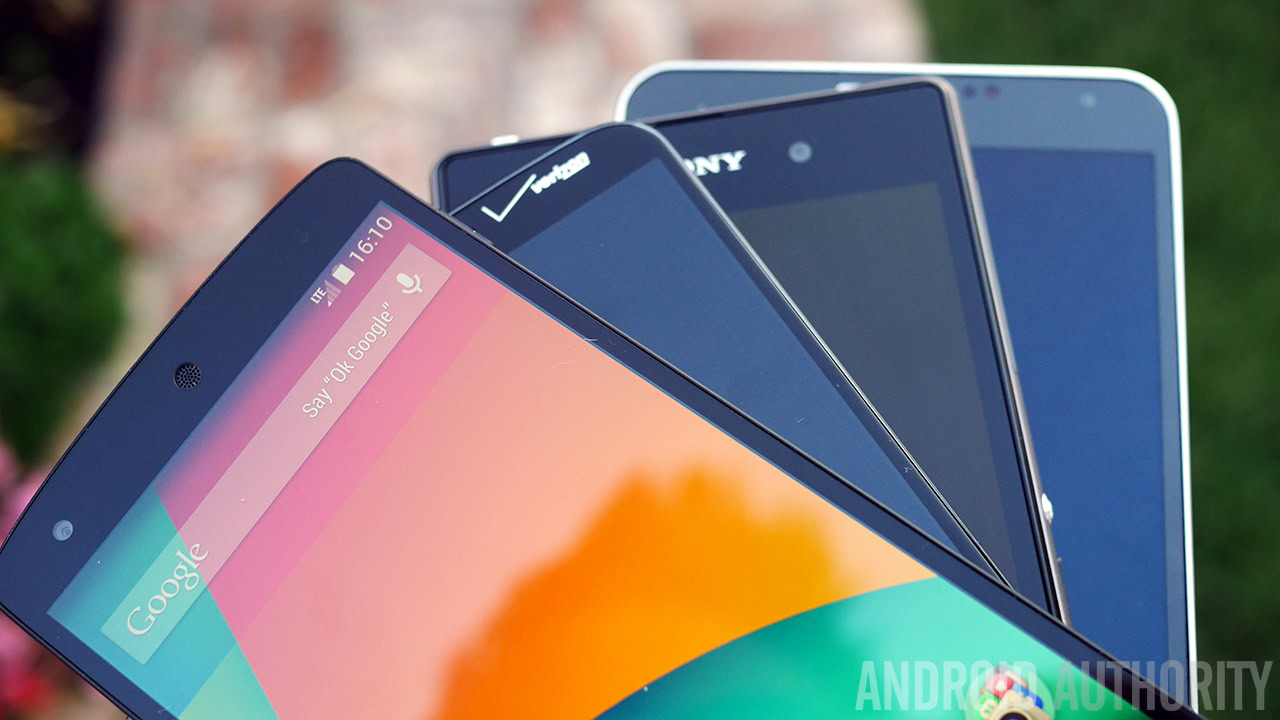
It might sound a little difficult to spend your hard-earned cash on the Nexus 5 when you look at the specs found in some of the flagships that have hit since it’s debut. But one major factor stands out when comparing all of these devices… the price. The Nexus 5 is still being offered at its original price of $349.99 from Google Play. Compared to other devices, the Galaxy S5 is offered around $550 – $600 unlocked, the HTCOne M8 for around $750 – $800 unlocked and the Nexus 6 starts at $650. The only phone that favors comparatively when it comes to price is the OnePlus One (starting at $300), but that’s if you can get your and on an invite or access it through pre-order.
Bottom-line, if you’re looking for a stock-Android experience, extremely quick updates, and decent build quality, you still can’t go wrong with the Nexus 5. Sure there’s other phones on the market that have beefier specs, but the Nexus 5 still handles very well when it comes to day-to-day use, running just about every game or app you throw its way.
Almost a year later this phone still is used by a lot of people. It’s light, fast, and an overall powerhouse. If you can look past its flaws, you’ll find yourself very happy with this more than capable device. It’s also worth mentioning that Lollipop should (hopefully) be rolling out in the near future, adding even more value to an already solid smartphone experience.
Do you still own a Nexus 5? How is it holding up? Do you think you’d still invest in one?